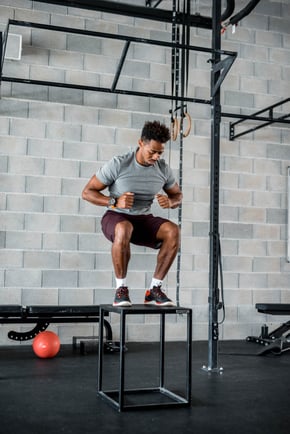 When watching elite athletes during competition, there are many athletic traits and features that we novices or amateurs marvel at. We think to ourselves, “If I did something like that, I wouldn’t walk for a week!” Seeing an NFL running back or wide receiver make a cut at full speed, a baseball player hitting a 400-foot home run, or a powerlifter deadlifting the weight of a Volkswagen Beetle are feats that just leave you in awe.
When watching elite athletes during competition, there are many athletic traits and features that we novices or amateurs marvel at. We think to ourselves, “If I did something like that, I wouldn’t walk for a week!” Seeing an NFL running back or wide receiver make a cut at full speed, a baseball player hitting a 400-foot home run, or a powerlifter deadlifting the weight of a Volkswagen Beetle are feats that just leave you in awe.
One of my favorites is to watch the jumping ability that is on display in countless basketball, football, and many other sporting events. Nothing seems to get fans and folks like myself more fired up than to watch an NBA player effortlessly float in the air and dunk on an opponent, or an NFL receiver jump up over two or three defensive players and come down with the football. No doubt, the combination of high-level athletic ability and hard work has paid off for many of these professional athletes with what seems like superhuman abilities. There is a reason that we see these men and women on TV and pay to see them during competition. The capabilities of the human body are crazy!
Improve Your Jump to Improve Your Sport
So, many of you reading this are probably not professional athletes. You might be former high school or college student athletes who have since “retired” from your respective sport. Like many of us, the “athlete” in us never really goes away. We find other sports or competition to feed that drive that we had as we grew up by playing recreational-league sports like basketball, flag football, or soccer, or have picked up new sports such as golf (like this guy) or tennis. And if you’re anything like me, you want to try and continue to improve in your new sport as much as possible.
Regardless of where you are in the timeline of your athletic journey, the vertical jump and vertical power will always play an integral role in your performance. Basketball and volleyball are the most obvious sports that are reliant on these abilities, but golfers, tennis players, and athletes in any other sport that utilizes rotational aspects would benefit highly by increasing their vertical jump. I mean, who wouldn’t want to hit the golf ball farther or add a few more miles per hour on their tennis serve?
When it all comes down to it, the amount of force we can put into the ground will dictate a lot of the athletic actions that happen with our bodies.
Three Jump Training Styles
Below I break down three different types of jump training styles that will put you on your way to soaring above the competition.
Body Weight
This is the most common type of jump training that you will see. Utilizing only the weight of your body, you perform these plyometric jump movements with little or no equipment. In the video below, you will see three movements starting from easiest to most advanced. These include the following:
- Wall Touches
- Box Jumps
- Depth Jumps
Resisted Jumps
Now we get into some of the less common vertical jump training options. Resisted jumps add some type of downward-pulling resistance that will make your jump seem more difficult and hopefully help you generate more effort into the movement. The movements in the video below include the following:
- Medball Powerball
- DB Resisted Jumps
- Band Resisted Jumps
Assisted Jumps
The third variation is assisted jumps. In my opinion, these are the most enjoyable. The goal here is to feel like there is a trampoline-effect going on where you just seem to spring up into the air. Most (if not all) variations will utilize a band. The three movements I have chosen for you are the following:
- Banded “Belt” Jumps
- Band Rack Pogos
- Band Rack Squat Jump
All in all, the vertical jump is a very important skill to improve and master with regard to overall athletic ability. When it all boils down, the amount of effort you put into the training will dictate the results you get. Doing the majority of your jumps at 50 percent effort will yield an improvement in just that: jumping at 50 percent. Try to maximize your effort with each set and repetition where you are working at or above 90 percent effort, whether that be because of doing lower repetition ranges (1–5 reps) and/or making sure that you are fully recovered between sets (about 1–3 minutes’ rest).
Give great effort, get great results!
This blog was written by Alex Soller, Athletic Performance Coach and NIFS trainer. To find out more about the NIFS bloggers, click here.


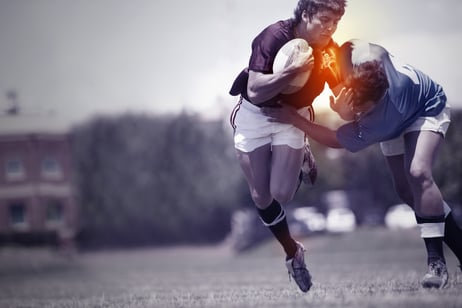 Sports careers, whether you are junior varsity or a hall of fame professional, all come to an end at some point. Often, these endeavors are marred with setbacks due to injuries ranging far and wide and sometimes spanning years. During competition and in the spirit of the moment, athletes sometimes push their bodies and minds beyond what was thought possible, resulting in amazing feats—but also potential injuries.
Sports careers, whether you are junior varsity or a hall of fame professional, all come to an end at some point. Often, these endeavors are marred with setbacks due to injuries ranging far and wide and sometimes spanning years. During competition and in the spirit of the moment, athletes sometimes push their bodies and minds beyond what was thought possible, resulting in amazing feats—but also potential injuries.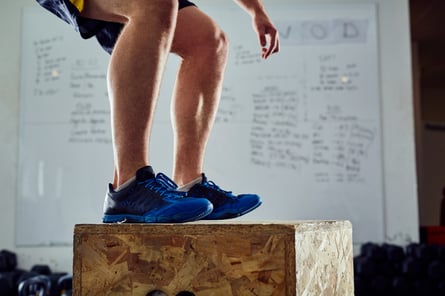 As an athlete there is no substitute for the ability to produce power and be explosive during your sport. From competitive weightlifters and NFL-caliber football players to distance runners, producing (and absorbing) high impacts is crucial for succeeding in your sport as well as staying healthy throughout your competition season. Are you incorporating any of these exercises into your current program?
As an athlete there is no substitute for the ability to produce power and be explosive during your sport. From competitive weightlifters and NFL-caliber football players to distance runners, producing (and absorbing) high impacts is crucial for succeeding in your sport as well as staying healthy throughout your competition season. Are you incorporating any of these exercises into your current program?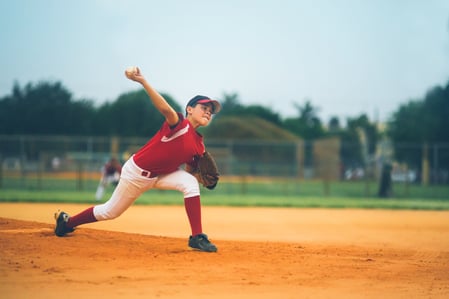 Recently I heard someone say something along the lines of, “That sixth-grade basketball player is ranked #1 in the country.” That got me thinking: How in the world are we ranking sixth-graders? They haven’t even gone through puberty yet!
Recently I heard someone say something along the lines of, “That sixth-grade basketball player is ranked #1 in the country.” That got me thinking: How in the world are we ranking sixth-graders? They haven’t even gone through puberty yet! 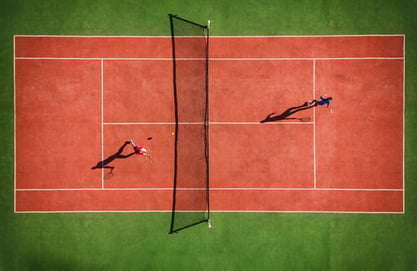 During this 2020 Coronavirus Pandemic, have you found yourself looking out your window and wishing that you could be enjoying sports, recreational activities, and exercising? In the not-so-distant past, we could spend seemingly unlimited time playing pick-up games of basketball with our best buds or head down to the gym and join our favorite yoga class, packed with like-minded individuals. Unfortunately, with social distancing being more and more prevalent in society, we have to not only limit contact sports, but also allow enough space so that others can safely participate in the activity, leaving classes no choice but to limit size or cancel altogether.
During this 2020 Coronavirus Pandemic, have you found yourself looking out your window and wishing that you could be enjoying sports, recreational activities, and exercising? In the not-so-distant past, we could spend seemingly unlimited time playing pick-up games of basketball with our best buds or head down to the gym and join our favorite yoga class, packed with like-minded individuals. Unfortunately, with social distancing being more and more prevalent in society, we have to not only limit contact sports, but also allow enough space so that others can safely participate in the activity, leaving classes no choice but to limit size or cancel altogether. 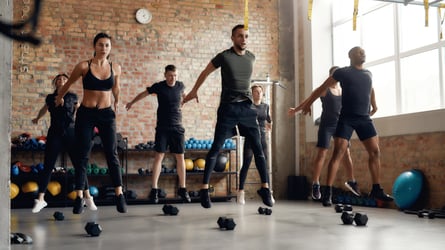 Want to jump higher, jump farther, or possibly dunk a basketball? With all the athletes I have trained over the years, at some point within their sport they all jump. Competitive as athletes are, they want to be able to jump higher like in volleyball, or jump farther like swimmers coming of the blocks, for example.
Want to jump higher, jump farther, or possibly dunk a basketball? With all the athletes I have trained over the years, at some point within their sport they all jump. Competitive as athletes are, they want to be able to jump higher like in volleyball, or jump farther like swimmers coming of the blocks, for example. 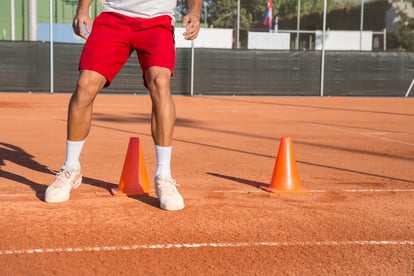 Agility drills basically represent an obstacle. Athletes who can respond faster to starts, stops, and change of direction earlier than the obstacle will have a practical advantage on the playing field. This blog highlights three of my favorite agility drills that can be built into your team’s conditioning routines. The benefits of these runs, jumps, and cuts include increases in reactionary speed, coordination, footwork, and body awareness. Athletes need to be able to change direction rapidly under control without decreases in speed.
Agility drills basically represent an obstacle. Athletes who can respond faster to starts, stops, and change of direction earlier than the obstacle will have a practical advantage on the playing field. This blog highlights three of my favorite agility drills that can be built into your team’s conditioning routines. The benefits of these runs, jumps, and cuts include increases in reactionary speed, coordination, footwork, and body awareness. Athletes need to be able to change direction rapidly under control without decreases in speed.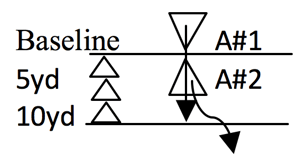 Drill 1: Offense/Defense—Partner Reaction Acceleration Tag
Drill 1: Offense/Defense—Partner Reaction Acceleration Tag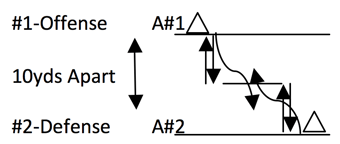 Drill 2: Cat & Mouse—5-5 Shuttle Reaction Tag
Drill 2: Cat & Mouse—5-5 Shuttle Reaction Tag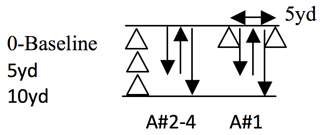 Drill 3: Shuttle Runs—Reaction 5-5-10 Shuttle
Drill 3: Shuttle Runs—Reaction 5-5-10 Shuttle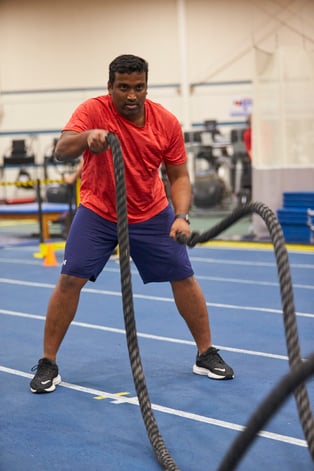 When you begin your fitness quest and are getting started on a new program, finding exercises that are appropriate for you is key to your success. Your fitness staff at NIFS has your back! Training methods and training tools developed from years of research and practice have shown that sometimes a simple exercise done well can be quite effective.
When you begin your fitness quest and are getting started on a new program, finding exercises that are appropriate for you is key to your success. Your fitness staff at NIFS has your back! Training methods and training tools developed from years of research and practice have shown that sometimes a simple exercise done well can be quite effective.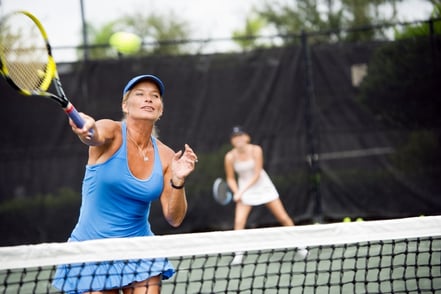 We exercise many ways every day, many times unknowingly. Sometimes this is because we actually enjoy doing it and it doesn’t seem like work to us. As the old saying goes, “time flies when you’re having fun.” One requirement for a lifetime activity, though, is that it most often needs to be something you can do from the time you stop wearing diapers until the time you start wearing diapers again. The ideas I like to explore can include fitness, but also non-exercise–based activities.
We exercise many ways every day, many times unknowingly. Sometimes this is because we actually enjoy doing it and it doesn’t seem like work to us. As the old saying goes, “time flies when you’re having fun.” One requirement for a lifetime activity, though, is that it most often needs to be something you can do from the time you stop wearing diapers until the time you start wearing diapers again. The ideas I like to explore can include fitness, but also non-exercise–based activities.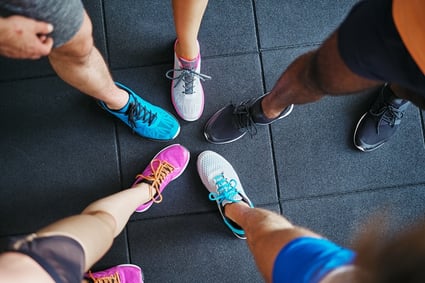 Believe it or not, shoes do serve a higher purpose than just to make a fashion statement—especially when you’re
Believe it or not, shoes do serve a higher purpose than just to make a fashion statement—especially when you’re